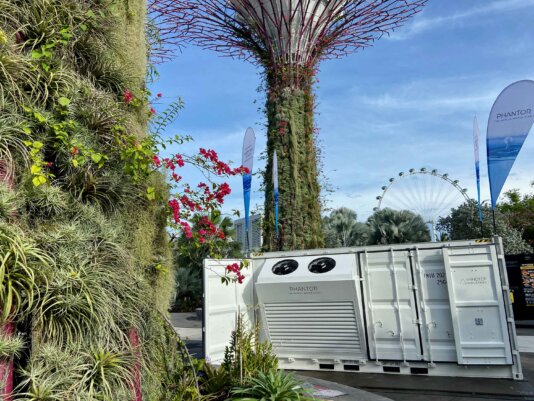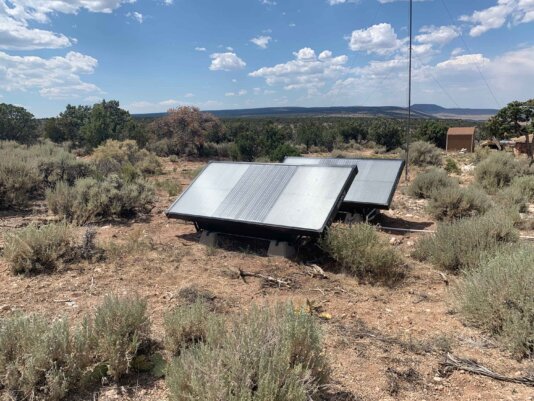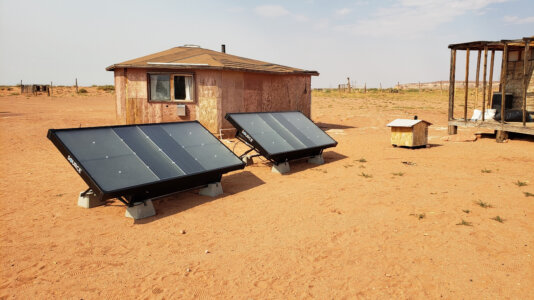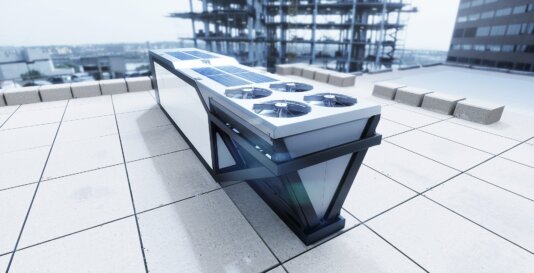- About
- Topics
- Picks
- Audio
- Story
- In-Depth
- Opinion
- News
- Donate
- Signup for our newsletterOur Editors' Best Picks.Send
Read, Debate: Engage.
| September 06, 2023 | |
|---|---|
| topic: | Climate action |
| tags: | #drought, #climate change, #Clean Water Solutions, #water |
| located: | Australia, Philippines, USA, United Arab Emirates |
| by: | Jess McCulloch |
When you turn on your shower and clean water pours out, it is easy to forget that the quest for easy access to clean water has been one of the defining challenges in human history. Ancient civilisations that harnessed water thrived.
Today, we are facing a global water crisis: the UN announced five billion people will face water shortages by 2050. In the wake of the hottest July on record, the World Resources Institute stated that almost half of the world's population is facing 'high' water stress for at least one month a year.
Meanwhile, WHO and UNICEF estimated in 2020 that one in four people lacked access to safely managed, clean drinking water at home. Unsurprisingly, 8 out of 10 people who lack access to basic drinking water services live in rural areas.
On top of that, climate change is affecting the spread of waterborne diseases like cholera, E. coli and typhoid - still a leading cause of human mortality and morbidity, with 3.4 million deaths annually, particularly in urban regions of countries in Asia, Africa and Latin America.
As global temperatures rise and extreme weather events continue to escalate, infectious diseases in contaminated water are likely to become a growing risk.
With the impacts of climate change exacerbating water scarcity and as terrestrial water storage dwindles, harvesting water from air vapour has been hailed by some as a sustainable solution to global freshwater insecurity.
Afeefa Rahman, a water resources engineer researching air vapour technology at the University of Illinois, spoke to FairPlanet about the potential of air as a reliable source for water access.
Afeefa’s research focuses on the capturing of large amounts of freshwater from humid air over oceans. "The water yield from oceanic evaporation would be a sustainable approach, even in the future climate, as it is a potentially infinite water vapour source," she said.
To harvest water, machines like atmospheric water generators or hydropanels draw in air and use sunlight, refrigerants or coolants to condense the vapour into water. They then filter or mineralise the water to make it safe to drink.
According to Afeefa, extracting water from the air has a minimal environmental impact compared to alternatives like desalination, which can harm oceanic ecosystems through brine disposal.
Engineers and designers are currently exploring ways to harvest water from air vapour as an alternative to groundwater. One such innovation comes from SOURCE Hydropanels, a company founded by Dr Cody Friesen and his team in Scottsdale, Arizona in 2014.
Each of their hydropanels uses solar energy to power fans that draw in air and push it through water-absorbing material. This process of passive condensation turns water vapour into drinking water that is mineralised for taste and kept clean in a storage tank. The technology requires only sunlight to extract clean drinking water and does not rely on existing infrastructure or electricity.
"Clean, safe drinking water is a fundamental human right. Our technology is currently being used in 52 countries around the world and it works in humid and arid environments, requiring only consistent sun exposure," Colin Goddard, SOURCE's vice president of business development, told FairPlanet.
He added, "With these hydropanels, people can access water anywhere, without needing to pull it from the ground, send it through old pipes, or transport it."
SOURCE's hydropanels currently sell at a retail price of USD 2,000. The company claims its technology provides a viable water solution to people living in crisis-and-drought-hit areas, including indigenous communities in Australia and the Philippines and people living in the American Southwest, which has been suffering from a well-documented drought for more than two decades now.
"Navajo Nation members living on tribal land - roughly 70,000 of whom don’t have access to safe drinking water - have been hit particularly hard," Goddard said. "Approximately 27,000 square miles in size, this community is just a few hours from our Scottsdale, Arizona office, but when it comes to accessing basic services, it’s essentially a different world. Some residents drive more than an hour each way to buy cases of plastic bottled water. Factoring in the cost of gas and time, what seems to be an affordable option actually costs as much as $80 (USD) per case."
Goddard went on to state that by establishing and maintaining meaningful relationships with tribal leaders and community stakeholders, their team has installed hydropanels at 547 homes throughout Navajo Nation to date.
"We work with community partners to secure grants for our projects. Additionally, SOURCE Global, as a Public Benefit Corporation, has financed some installations," he added. "We’ve also secured funds from private donors - who believe, like we do, that access to drinking water is a fundamental human right - to bring some projects to fruition."
PHANTOR is another innovation harvesting water from air vapour. Designed by the Austrian studio DOIT for Imhotep Industries, the 40-feet long atmospheric water generator can harvest 10,000 litres of water a day from ambient humidity - enough water to supply a residential apartment block or hospital permanently.
The atmospheric water generator sucks in water vapour and condenses it into liquid using a chilling system powered by electricity or solar energy. The water passes through carbon and bacterial filters, UV disinfection and mineralisation.
Being available in two compact sizes, 40-feet and 20-feet shipping containers, makes them highly portable compared to other generator models. This mobility gives them the potential to reach remote communities, respond to catastrophes, support peace-keeping operations and serve water-stressed agricultural sites effectively.
However, one of the main drawbacks of this technology is that industrial scale water generators require a great deal of energy to operate - around 70KW to run one unit, equivalent to half a football field of solar panels. They also yield substantially higher quantities of water in more humid environments, and are therefore more or less effective depending on their geographic location.
"A significant issue surrounding these technologies is their scalability and their potential to effectively provide substantial freshwater quantities for larger communities," Afeefa from the University of Illinois said.
"We have designed PHANTOR to be highly energy efficient, reducing the cost of the water," Lothar Stadler, CCO of Imhotep Industries, told FairPlanet.
Their technology was recently showcased at Greentech Festival in Singapore, where the company used water from the generator to water the local botanical gardens. They estimate that in a climate like Singapore's, one 40-foot unit can produce 2.8 million litres per year. This is compared to 600,000 litres that can be produced a year in a climate like Germany's.
That said, the company sees potential in providing such generators for industrial water usage in places like factories. However, the invention is still in its infancy and currently only operates at a hotel in Dubai, where is being showcased at events. PHANTOR also has one unit headed to Africa and registered an order of six units in the Gulf region.
"We have had contact with the UN and refugee camps in Kenya and Turkey. However, as a start-up, we need commercial customers like hotels and hospitals to support the idea," Stadler said.
In the long-term, the team strives to provide drinking water for drought-and-disaster-stricken regions by transporting it on Airbus A400Ms. With the ability to be up and running in 15 minutes, the generator only needs an electricity source and the right climate to operate. "It would be great to have a new partner in the field of disaster relief, [through the] UN or foundations, as we could send the generator to disaster areas for a free aid trial," added.
Each unit is expected to have a lifespan of approximately 10-15 years and is priced at an average of €0.03 to €0.10 per liter, in addition to electricity expenses. However, with a cost ranging from €350,000 to €500,000 per unit, this solution represents a substantial investment that may not be accessible to certain communities and regions.
Making this technology a viable water source for the future will require forging partnerships, securing investments, enhancing efficiency and achieving scalability.
Dr Friesen from SOURCE agrees, saying that working toward global drinking water scarcity solutions cannot be accomplished unilaterally. "Collaborating with NGOs and other stakeholders has been paramount. The relationships and support we receive from government officials around the world play a pivotal role in helping us meet the drinking water needs of underserved communities."
"Equitable access to this technology is a significant consideration for the affordability of water-stressed communities globally," said Afeefa, highlighting the urgent need to secure clan water access to people who are most vulnerable to climate change.
Meanwhile, the collection of water from the air, both on land and over oceans, is already providing drinking water solutions in rural areas, drought-prone regions and crisis zones. But the critical question is whether this technology can be scaled sustainably and affordably to influence the future of water security.
Image by Imhotep.
By copying the embed code below, you agree to adhere to our republishing guidelines.






